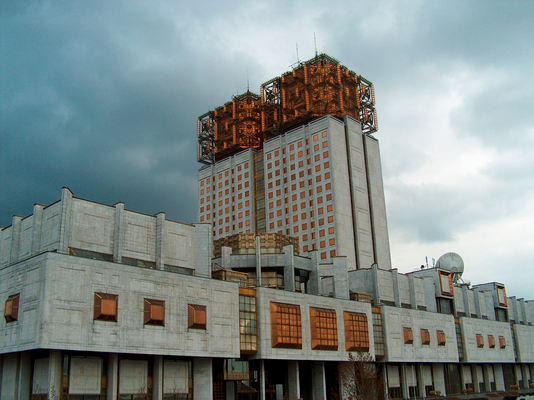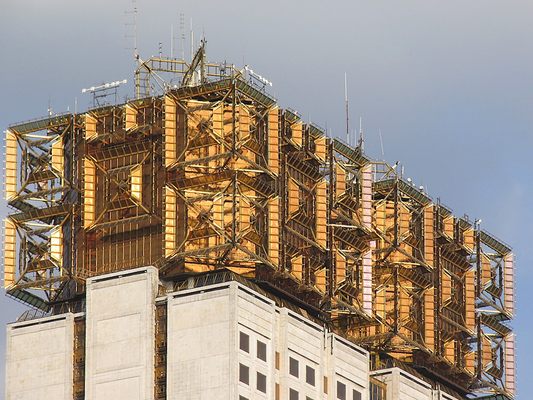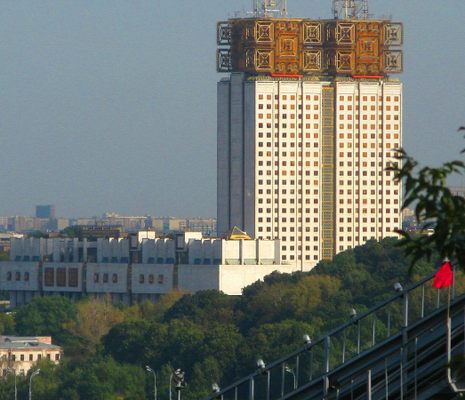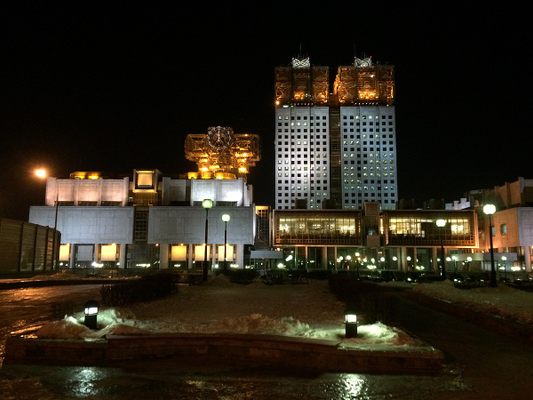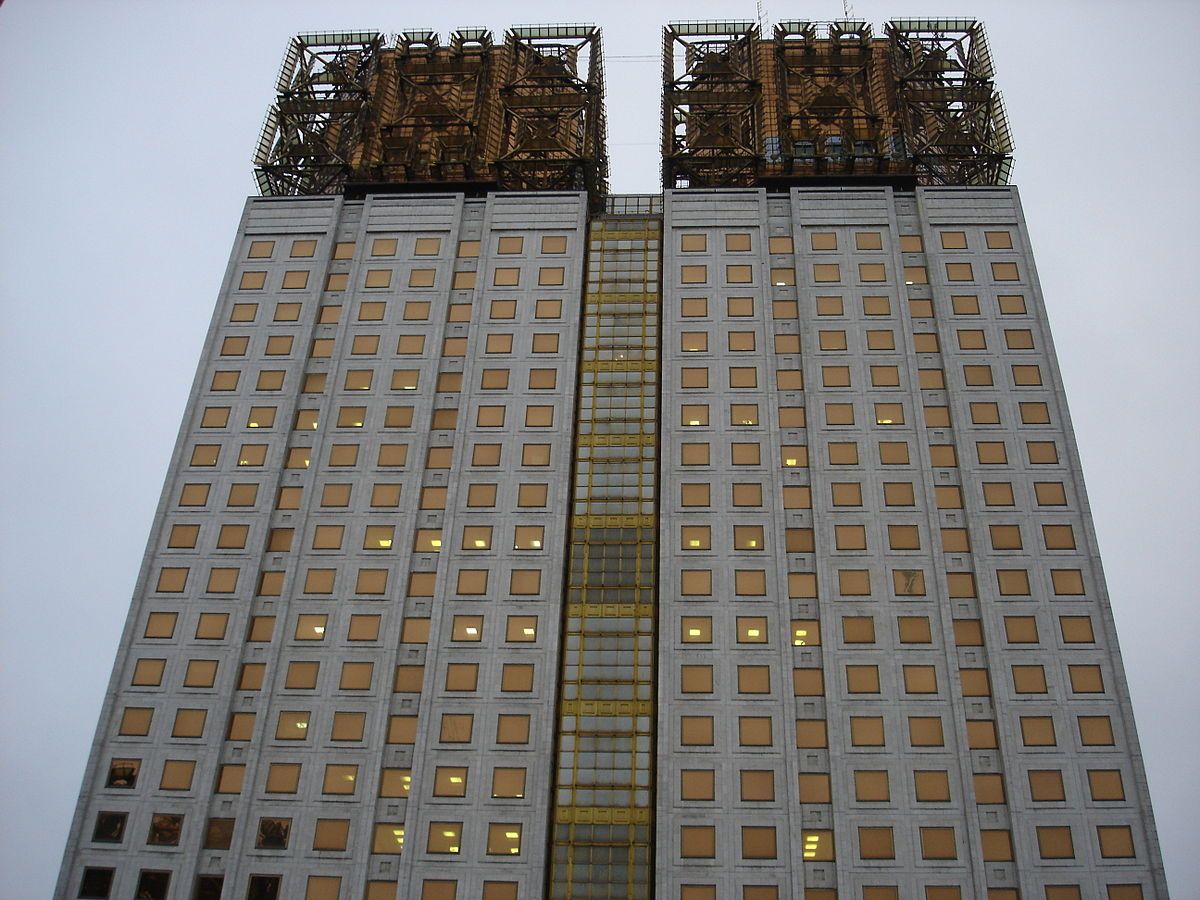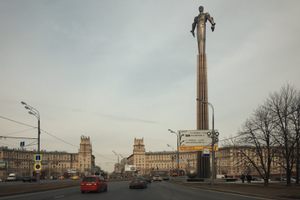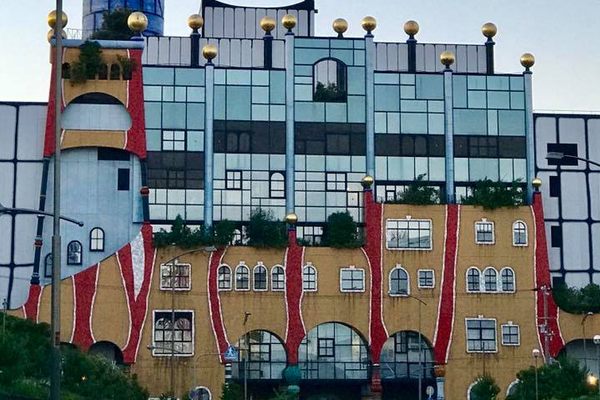About
Moscow's RAN (Rossiiskaia akademiia nauk) building is a strange and unique Soviet project that houses a branch of the Russian Academy of Sciences. Under dark grey winter skies, one might wonder where its nickname, "Golden Brains," came from—perhaps the students admitted were exceptionally bright? But when the sun emerges, the reasoning becomes abundantly clear.
Reflecting in the sunlight, the wiry brown twists and geometric turns atop the building shimmer gloriously, loosely resembling the mechanical workings of the mind.
Construction of the 20-story academic tower began in the early 1970s, though it was first conceived in the 1960s. It consists of two closely spaced towers and lower buildings containing office space. The style is generally referred to as late Soviet modernism, and the unique tops are a beautiful example of contemporary design.
However according to local legend, a former staff member at the building once said that people started experiencing unexplained headaches after its construction. This was followed by more extreme conspiracy theories that the bright metal rooftops were a state instrument for "zombifying" the residents of the capital city, transmitting signals to control the minds of the people.
Related Tags
Know Before You Go
There's a restaurant inside the "brains" on the 22nd floor. But expect to do it for the view. The food is rather pricey. The terrace is open all year long (catering only in summer; blankets are available). You can see some major landmarks like the Luzhniki stadium, Moscow University and the skyscrapers of Moscow City. The nearby Andreevsky monastery's bells can be heard from the terrace every hour. The low-rise part of the complex houses a 1,500 capacity concert hall, a winter garden and a courtyard.
Community Contributors
Added By
Published
March 27, 2018
